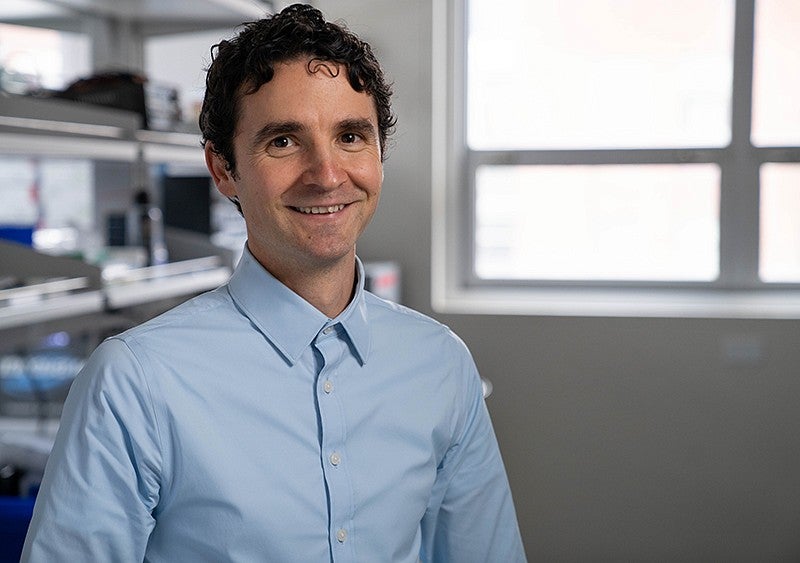
Marian Hettiaratchi, an assistant professor at the University of Oregon’s Phil and Penny Knight Campus for Accelerating Scientific Impact, has been awarded a 3-year, $602,000 R21 Trailblazer Award from the National Institutes of Health / National Institute of Biomedical Imaging and Bioengineering for her project, “A Directed Evolution Approach to Affinity-Based Protein Delivery.”
A bioengineer whose research focuses on combining chemical and biomedical engineering approaches, Hettiaratchi seeks to create effective protein delivery vehicles for regenerative medicine. By integrating cutting-edge techniques in protein engineering, polymer chemistry and computational modeling, she designs versatile, clinically-relevant biomaterials that can precisely deliver proteins critical to the healing process.
Hettiaratchi’s NIH project addresses the issue of treating severe injuries that often result in impaired tissue regeneration. She is seeking to generate a biomaterial platform to enable the precise delivery of multiple proteins from a single material. This ability will allow researchers to investigate the timing of protein delivery for healing. Because this biomaterial can be easily adapted to different types of proteins and tissue injuries, it has the potential to enhance repair in many different tissues.
“Proteins are important in every system in the body. Our objective is to create biomaterials that can locally deliver proteins to sites of injuries with high precision to accelerate tissue repair,” Hettiaratchi said.
The project will employ a unique combination of directed evolution and computational and statistical models. The modeling results will inform the design of biomaterials that enable the delivery of multiple proteins with distinct release profiles. The hope is that the biomaterial platform can be applied to the precise delivery of a broad range of proteins and will enable systematic investigation of the timing of protein delivery required for tissue healing.
“Ultimately, we expect to achieve independent control over the release of a wide range of therapeutic proteins relevant to tissue repair, laying the foundation for many clinically relevant strategies for treating severe injuries that are typically difficult to treat,” Hettiaratchi said. “Our work is very interdisciplinary, and relies on expertise in chemical and biomedical engineering, but also polymer chemistry and molecular biology.
Conducting this work at the Knight Campus allows Hettiaratchi to have access to the expertise and equipment necessary to conduct this type of interdisciplinary work. She recruits undergraduate and graduate students from the different science programs and the new bioengineering graduate program at the University of Oregon, to fill the diverse types of expertise and interest that researchers need for this and other projects. The statistical modeling component of the project will be conducted in collaboration with Kaitlin Fogg, an assistant professor of bioengineering in the chemical, biological, and environmental engineering department of Oregon State University.
“We are excited to work on this project with Kaitlin Fogg and further strengthen collaborations between University of Oregon and OSU faculty, which are being facilitated by our joint bioengineering graduate program,” Hettiaratchi said.
— OCTOBER 6, 2021


